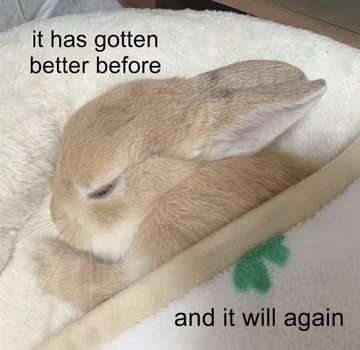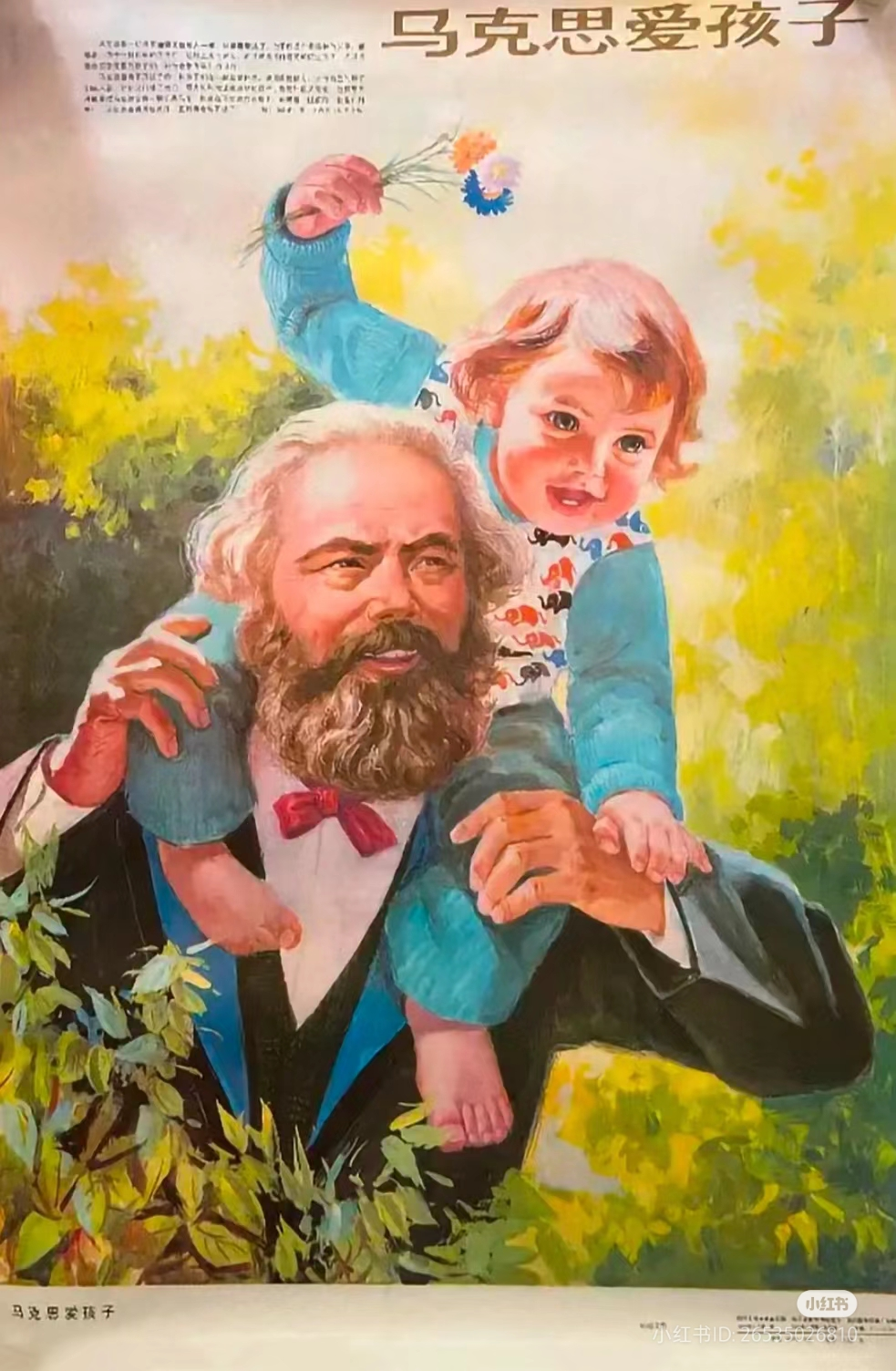

I’m definitely going to be checking these posts when I remember to.


I’m definitely going to be checking these posts when I remember to.


That’s all I have to say about Cain. I should note that these insights come not from me but from God. So what do you think?
I mean, who am I to argue with God I guess?


The economists found for example that “AI chatbots have created new job tasks for 8.4 percent of workers, including some who do not use the tools themselves.”
In other words, AI is creating new work that cancels out some potential time savings from using AI in the first place.
“One very stark example that it’s close to home for me is there are a lot of teachers who now say they spend time trying to detect whether their students are using ChatGPT to cheat on their homework,” explained Humlum.
He also observed that a lot of workers now say they’re spending time reviewing the quality of AI output or writing prompts.
Humlum argues that can be spun negatively, as a subtraction from potential productivity gains, or more positively, in the sense that automation tools historically have tended to generate more demand for workers in other tasks.
“These new job tasks create new demand for workers, which may boost their wages, if these are more high value added tasks,” he said.

The lightening of the labour, even, becomes a sort of torture, since the machine does not free the labourer from work, but deprives the work of all interest. Every kind of capitalist production, in so far as it is not only a labour-process, but also a process of creating surplus-value, has this in common, that it is not the workman that employs the instruments of labour, but the instruments of labour that employ the workman.
— Capital Volume 1, Production of Relative Surplus Value\Machinery and Modern Industry\Section 4: The Factory
But also … 
Feeding unrealistic hopes about the information and communications technology (ICT) sector representing an economic transformation as thoroughgoing as electricity or the internal combustion engine, and an economic boom to match the ones they created – a ‘once in a century acceleration of innovation’ and ‘veritable shifts in the tectonic plates of technology’ (Fleckenstein, 2008: 81–4) – Greenspan began to advance the view that a new economy was emerging, and a ‘productivity miracle’ ongoing which the data did not reveal. In riding on it, the stock market was riding on so much hot air.
[…]
the need to protect market share against competitors … computers are used extensively to provide information aimed at taking customers, profits, or capital gains away from other companies. This is a zero-sum game involving redistribution of wealth rather than the increase of wealth, yet each individual firm has a strong incentive to make computer investments that, if they do not snatch wealth away from someone else, at least act as a defensive blockade against a hostile attack.
(Gordon, 2000: 69)
In addition to enabling firms to fight for market shares in the zero-sum game the long downturn necessitated, computers could also increase control over inventories and employees, and financial institutions were able to determine the distribution of income and wealth. Jeff Madrick mused, more optimistically, that those looking to ICT to yield productivity increases were barking up the wrong tree. It might be that it was leading to
a high-technology version of a crafts economy, based on worker skills, thinking, and inventiveness, rather than on the muscle of large-scale factories and distribution networks … [which] … may simply not be able to remove human beings from the production process as rapidly as the old standardized economy of the mass production age.
(Madrick, 1998)
— Geopolitical Economy, Centripetal Finance, Hidden Productivity Miracle
And here we sit at the precipice of factorization of the “high-technology version of a crafts economy”.


 Thanks comrade!
Thanks comrade!


I think you’ve really picked up on my train of thinking, this is precisely how I feel as well.


I think artists have been placed in that position through decades of combat with capitalists over their costly labor reproduction. Instead of having an artist in house, you contract the artist out through commission work. You no longer need to provide them benefits or wages, and you can discard them when they’re done. They are gig laborers. They stand to lose just as much and be alienated in similar ways as the wage laborer found in other production houses.
You are correct in the assessment that this only drives them to pursue stricter property laws, but that is the natural outgrowth of the system of capitalism. In fact, it is a deep and cutting contradiction. IP laws and copyright laws exist to protect the holder of created assets, but in a world where corporations can also be the holders of creative assets, it pits the demands and desires of the individual artist against the capitalist monopoly on creative expression. They end up supporting laws that further entrench the interests of capital, a blade which will soon be turned back on the individual artist, cutting them where they stand. That is the fate of the petite bourgeois: They are either kicked into the mass grave dug by the capitalist, or they dig the capitalists grave.
These are precisely the people who need to be agitated on the side of the working class, and using AI generative tools to do so will not be a successful path.


There is something to note about this, for sure. I think one of the things about art is that you don’t always appreciate it for the objects it creates, but you appreciate it for the labor required to produce the object and the vision of the artist embodied in the final product. If you were to capture a highly detailed 3D scan of The David, and then a three-dimensional CNC machine was able to recreate it in only several hours of operation time, and it was accurate down to the very last curvature, it would only cheapen the product, wouldn’t it? Would we still be able to appreciate the labor and vision embodied in the piece? If you were to google a photo of the Mona Lisa, can you really appreciate it, without seeing it in person? It is curious that our continued fascination with objects like the Mona Lisa is rooted in the methods [1][2] that produced them. That is the interesting intersection of art, though, isn’t it? Because, if someone could model an incredible statue using Z-Brush, feed it into a fictional CNC device that could carve that same model out of 10ft of marble, then, what are we appreciating when we view it? The labor is embodied in the production of the model in z-brush, but the output is the marble statue that captures all its exquisite detail.
Art, in many ways, is the synthesis of the debate between Idealism and Materialism. Michelangelo believed he was merely a liberator of figures trapped in stone, figures he could see in his mind’s eye. But the labor of liberating these figures from the stone is the culmination of all the other figures he had liberated prior. The David exists at the intersection of the Material and the Ideal. Is that what we lose through this process of automating this creative labor? We take the practice of production, of synthesizing our ideals in material form, and as a result create a cold and mechanical process of it?


I think we need to separate out the various sectors this “tool set” impacts. Because in my statement, I’m explicitly talking about Artists and Writers, wage laborers for multimedia enterprises who require a high degree of training and experience to do their work. “Tech Workers” are a very different category of laborer and AI presents itself in a very different way then it does to Artists, it still amounts to a form of alienation, even if what a coder does can be rather deterministic when compared to a Graphic Designer, Storyboard Artist, or Scriptwriter.
We know that in the current term, this issue comes down to one of Intellectual Property, where most of the data required to create the abilities of DeepSeek and others regarding coding was appropriated in violation of the terms of the various open-source licenses. What do these licenses protect, though? Is it the various If, Then, Else code blocks, the declaration of Struts or Classes, or is it something else? These licenses protect the labor of intentioned design. This intentioned design is something that AI is not explicitly capable of doing. It produces end products but does very little to approximate design intention. That isn’t stopping the capitalist from attempting to do so, however, which is why models like the DeepSeek R2 exist. They exist to try and bridge the gap between generating raw end product and instead generating intentioned design. This creative labor, one of intention, is what produces things like Linux, like VS Code, without which there would be no data to train these models on. That is a large contradiction at the heart of the system. In a world still reliant on the wage system, this appropriation represents a kind of loss of wages, not in the short term, but in the long term should nothing change. Your examples are not tools that alienate the tech worker from their labor in the same capacity or way, and, if anything, they enhance the labor process. In the example of VS Code or similar Integrated Development Environments (IDEs), they streamline the production of code by providing you with linting tools, formatting tools, tab completion, and expandability through extensions to allow the laborer to enhance and tailor the production process to their desires and preferences. They do not replace the production process in the same way that generative AI does.
Generative AI for coding is closer to an actual enhancement of the labor process then it is a process of alienation, since there are many deterministic patterns of coding that can be predicted by things like Co-Pilot, but the capitalist doesn’t care about enhancing the creative output, they care about reduced labor costs. They’re willing to place lower skilled laborers at the helm of something like Co-Pilot to do the work of a more highly skilled laborer. Systems design and building is a skill set that requires design intention, and if you are not trained to build proper secure systems, you won’t be able to identify when Co-Pilot produces insecure code, since we know that these models are trained on all kinds of codebases, secure and insecure.
I know it sounds like I’m circling the same “ethical” topic here, but this is a line of critique consistent with our understanding of capitalism. If the Luddites were still an active group today, they would be burning down datacenters in protest over this clear and present threat to their labor. We must take this line, as this rhetoric stands to be more powerful and in alignment with other anti-automation positions within the working class, like those of the dockworkers from their strike just a few years ago. Even then, the general population contained a sentiment inline with this same sentiment we’re discussing here, one that doesn’t acknowledge the alienation being forged by this automation. “It would be more efficient if we implemented automation at the docks, then let the dockworkers continue to do their labor”, and in supporting that line we are supporting the displacement of the worker at the benefit of the capitalist. To me, there is no distinction between the two.


There are two things at play here, that, I think, need to be addressed. There is the methodology which can be applied to write a computer program that can “learn” a task, and then there is the interactive experiences that allow you to create your own output with the pretrained model. The former is a tool in all regards, one that is “neutral” in its composition because it can be applied in broad ways in many different disciplines. The latter — a model trained on terabytes of art — exists only to alienate the artist as the wage labor worker in an attempt to reduce the overall reproduction cost of their labor. These “neural networks” can be trained to do all kinds of tasks, and in 2014 a paper was released entitled “Attention is all you need” in which most of these generative tool sets sit upon. A great example of this undelaying technology being used outside the creative fields is the work being done on proteins.
The researchers trained and tested ProtGPS on two batches of proteins with known localizations. They found that it could correctly predict where proteins end up with high accuracy. The researchers also tested how well ProtGPS could predict changes in protein localization based on disease-associated mutations within a protein. Many mutations — changes to the sequence for a gene and its corresponding protein — have been found to contribute to or cause disease based on association studies, but the ways in which the mutations lead to disease symptoms remain unknown.
Figuring out the mechanism for how a mutation contributes to disease is important because then researchers can develop therapies to fix that mechanism, preventing or treating the disease. Young and colleagues suspected that many disease-associated mutations might contribute to disease by changing protein localization. For example, a mutation could make a protein unable to join a compartment containing essential partners.
This is clearly an interesting and potentially revolutionary shift in medical technology, one that improves lives. I would see no objection to the use of this tool for this intention, it is clearly a net positive for the world. Object detection is another application for this technology that has broad use cases in terms of safety, but that same training data can be weaponized in automated weapon targeting systems as well. It is the intention that is the issue at hand here. What is the intention of building a model that can reproduce finished works of “art”? We would ask the same question about an AI model trained to identify an individual instantly simply by seeing portions of their face. What is the intention of this model, and why are we using it to identify people?
As you place it: “such as the tendency for the arts to be more about mass-producing things criticized as low quality than about anything inherently artistic.” You are conflating two entirely different forms of artistic expression. There is art produced by laborers in what amounts to art factories, and then there is the more academic and philosophical process that creates Art. The objections I see surrounding AI art is from the former, not the latter. Artists who complain that an AI model has appropriated their “style” come from a place of knowing it diminishes their market appeal. Some artists are hired explicitly because they bring a unique style to a project. If an AI model can simply appropriate that style, however, then there is no need to hire this artist to begin with. This is not even an imaginative example, it is an example I have seen expressed over and over. In fact, when an artist or a team of artists works with the attention-based training algorithms to produce interesting media, I have no real issue with this, but I also know that for someone to truly own their labor in that way is incredibly difficult to do so, if not entirely impossible.
I don’t want to trivialize the downsides, but at the same time, I’m concerned that it is much ado about nothing relative to the larger problems of capitalism that need addressing. That those who oppose generative AI are themselves getting swept up in some of the marketing and believing it a bit too much; treating its potential as faster-moving and larger than it is.
I don’t think you’re trivializing at all. This is a constructive discussion, and it should be had. This technology has a kind of mist form to it, where the nuts and bolts of how and why it works, where the tool begins and the weapon ends, are difficult to parse and identify. I don’t exactly believe it is a “much to do about nothing”, however, because to train models that produce the kind of images, text, reasoning and logic like the ones we have now can only be done by capital owners. The mass market “tool set” will always be a weapon of the capitalist to displace wage laborers producing some of the more complicated forms of output, art and code. There doesn’t need to be a high level of potential or even a fast-moving development, it just has to be good enough for the consumer to accept uncritically, and I think the technology is good enough now that it passes that sniff test.


I draw pictures as a hobby as well. However, I understand that the vast majority of “art” is created by wage laborers, the majority of which fall into the entertainment and games industries, industries that are both notorious for over working their laborers. I’m sorry that you seem to have this growing “hate” for a subsection of the working class, it doesn’t seem very comradely of you if I’m being honest. These “picture drawers” are who exactly? The ones you diminish with your tone and words work longer hours under more stressful conditions than myself as a hobbyist artist. It is funny that Yog uses photography as his primary example in his essay because photography is a field of creative work that only exists as a result of technological advancements. The camera does not alienate the artist from the process of creating art, it created the artist. It is, in its self, neutral in all regards to the artist because without it there would be no photography. It stands in stark and blazing contrast to that of textual and graphical AI “art”, in the sense that, if generative text and graphic AI tools were to vanish tomorrow, there would still be graphical art being produced, and there would still be literature being written.
Somehow, I am not shocked to see this opinion from a Lemmygrad user. As of late, I have noticed a growing acceptance of the weapon of alienation against the wage labor artist. That is the chief complaint here, isn’t it? That this “tool” is not one of neutrality, unlike many of the other advancements in both entertainment and games. Generative AI produces end products because they are trained on end products, this is precisely how the tool reduces the artists’ role to that of a subordinate to it. Sure, as Yog points out, there are people doing novel things with AI as part of a bespoke workflow, but that is not what the vast majority of capitalists desire when looking at these tools. They want to cut out graphical designers, stock photography licenses, and low-level artists. They intend to contract an artist for a set amount of time, and then train an AI model on their limited labor, and then never hire them again.
Hobbyists like myself, yourself, and like Yog have no skin in the game with this argument, except as a unified class in a struggle against capitalist desires. The line is drawn there. I have the luxury of producing my own drawings in what limited leisure time I have. Ironically, artists in the creative fields, looking to work for a wage or a commission, to sustain their living conditions, produce more art in service of reproducing their own labor, than art for the sake of creating art. In that way, I have more creative freedom than that of an artist who works in the field for a living.
So again, I’m sorry that you’ve found yourself on the side of capital in this regard. Maybe you’ll come to see that to be true in the future. I do not suspect that I’ll have changed your position with a few paragraphs of text.


I found a mechanical turk that granted wishes and told it to make me older. I do not recommend having the body of a mid 30 year old and the mind of a 13 year old. Ended up in a love affair with someone my age even though I was mentally a 13 year old. Left me messed up for a long time. I eventually stopped being old and went back to my normal age. If you want my advice, age normally, don’t wish for adulthood on a mechanical turk.
I need to read Lenin… Is this from Imperialism or something else?


Might be hard because the creator has control over the filter. You could control for that but I bet account age changes how the filter works to prevent spam from people creating fresh accounts. You would need a lot of accounts to do this effectively as some will undoubtedly get banned in the process. Then you have to account for actions being policed based on origin IP. Places like YouTube know if your coming from a commercial ISP vs a data center. So of you’re trying to script this, you would need something like a data center, or some public network addresses that are “disposable”.
So I think it’s unlikely someone has put this to the test.


Pretty sure he’s a Zionist. I could be wrong.


Aw you’re going to make me cry. They are so precious. I’ve told people before, having a child will be the death of you, and from your ashes you will be reborn anew. You will never be the person you were before them, you’ll be so much more.
There are days I wonder what I’ve gotten into. Then there are days where I’ve never been so full of joy. You both grow together, in a dialectical entanglement, each reflecting one another, building new and exciting days, months, and years.
Every person who cares for them leaves a little part of themselves woven into the tapestry of their personality. They are there sum of our parts and hopefully more.
❤️


Yup us too. Especially since her brother isn’t old enough to be giving up naps. This weekend she had a lot of fun gluing shapes I cut out for her onto construction paper, making little colleges. We went to the craft store today and got more paper, glue, and her own kid scissors. Kept her very occupied as I passed out in the chair trying to read a book.


We only ever buy local milk but yeah I have no idea what one could do… Im not buying a cow.


Congratulations! Welcome! That first week can be scary, I remember thinking “they just let us go home with her?” Having kids will easily be the most challenging thing you’ll do for a long time. How are you holding up?
I’ll take that one on the chin, that’s fair. In my haste I am conflating concepts.
Isn’t this simply everything under capitalism? I guess you can take a principled stance with your art, but you’ll more then likely die broke and homeless.